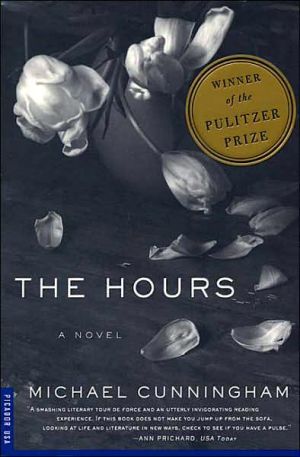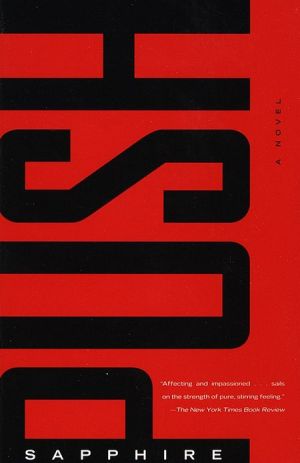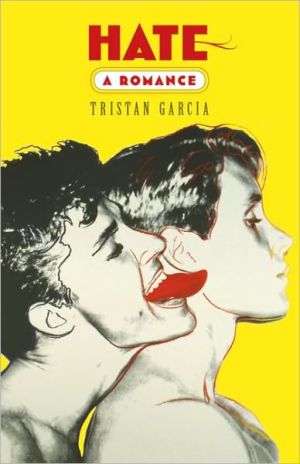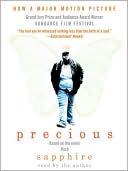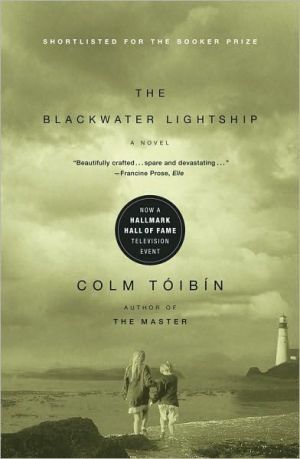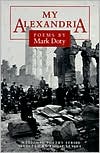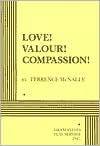The Hours
A daring, deeply affecting third novel by the author of A Home at the End of the World and Flesh and Blood.\ In The Hours, Michael Cunningham, widely praised as one of the most gifted writers of his generation, draws inventively on the life and work of Virginia Woolf to tell the story of a group of contemporary characters struggling with the conflicting claims of love and inheritance, hope and despair. The narrative of Woolf's last days before her suicide early in World War II counterpoints...
Search in google:
In The Hours, Michael Cunningham, widely praised as one of the most gifted writers of his generation, draws inventively on the life and work of Virginia Woolf to tell the story of a group of contemporary characters struggling with the conflicting claims of love and inheritance, hope and despair. The narrative of Woolf's last days before her suicide early in World War II counterpoints the fictional stories of Richard, a famous poet whose life has been shadowed by his talented and troubled mother, and his lifelong friend Clarissa, who strives to forge a balanced and rewarding life in spite of the demands of friends, lovers, and family.USA Today - Ann PrichardMichael Cunningham's novel The Hours is that rare combination: a smashing lliterary tour de force and an utterly invigorating reading experience. If this book does not make you jump up from the sofa, looking at life and literature in new ways, check to see if you have a pulse.
Excerpt from The Hours by Michael Cunningham. Copyright © 1998 by Michael Cunningham. To be published in November, 1998 by Farrar, Straus & Giroux, LLC. All rights reserved.\ She hurries from the house, wearing a coat too heavy for the weather. It is 1941. Another war has begun. She has left a note for Leonard, and another for Vanessa. She walks purposefully toward the river, certain of what she'll do, but even now she is almost distracted by the sight of the downs, the church, and a scattering of sheep, incandescent, tinged with a faint hint of sulfur, grazing under a darkening sky. She pauses, watching the sheep and the sky, then walks on. The voices murmur behind her; bombers drone in the sky, though she looks for the planes and can't see them. She walks past one of the farm workers (is his name John?), a robust, small-headed man wearing a potato-colored vest, cleaning the ditch that runs through the osier bed. He looks up at her, nods, looks down again into the brown water. As she passes him on her way to the river she thinks of how successful he is, how fortunate, to be cleaning a ditch in an osier bed. She herself has failed. She is not a writer at all, really; she is merely a gifted eccentric. Patches of sky shine in puddles left over from last night's rain. Her shoes sink slightly into the soft earth. She has failed, and now the voices are back, muttering indistinctly just beyond the range of her vision, behind her, here, no, turn and they've gone somewhere else. The voices are back and the headache is approaching as surely as rain, the headache that will crush whatever is she and replace her with itself. The headache is approaching and it seems (is she or is she not conjuring them herself?) that the bombers have appeared again in the sky. She reaches the embankment, climbs over and down again to the river. There's a fisherman upriver, far away, he won't notice her, will he? She begins searching for a stone. She works quickly but methodically, as if she were following a recipe that must be obeyed scrupulously if it's to succeed at all. She selects one roughly the size and shape of a pig's skull. Even as she lifts it and forces it into one of the pockets of her coat (the fur collar tickles her neck), she can't help noticing the stone's cold chalkiness and its color, a milky brown with spots of green. She stands close to the edge of the river, which laps against the bank, filling the small irregularities in the mud with clear water that might be a different substance altogether from the yellow-brown, dappled stuff, solid-looking as a road, that extends so steadily from bank to bank. She steps forward. She does not remove her shoes. The water is cold, but not unbearably so. She pauses, standing in cold water up to her knees. She thinks of Leonard. She thinks of his hands and his beard, the deep lines around his mouth.\ She thinks of Vanessa, of the children, of Vita and Ethel: So many. They have all failed, haven't they? She is suddenly, immensely sorry for them. She imagines turning around, taking the stone out of her pocket, going back to the house. She could probably return in time to destroy the notes. She could live on; she could perform that final kindness. Standing knee-deep in the moving water, she decides against it. The voices are here, the headache is coming, and if she restores herself to the care of Leonard and Vanessa they won't let her go again, will they? She decides to insist that they let her go. She wades awkwardly (the bottom is mucky) out until she is up to her waist. She glances upriver at the fisherman, who is wearing a red jacket and who does not see her. The yellow surface of the river (more yellow than brown when seen this close) murkily reflects the sky. Here, then, is the last moment of true perception, a man fishing in a red jacket and a cloudy sky reflected on opaque water. Almost involuntarily (it feels involuntary, to her) she steps or stumbles forward, and the stone pulls her in. For a moment, still, it seems like nothing; it seems like another failure; just chill water she can easily swim back out of; but then the current wraps itself around her and takes her with such sudden, muscular force it feels as if a strong man has risen from the bottom, grabbed her legs and held them to his chest. It feels personal.\ More than an hour later, her husband returns from the garden. "Madame went out," the maid says, plumping a shabby pillow that releases a miniature storm of down. "She said she'd be back soon."\ Leonard goes upstairs to the sitting room to listen to the news. He finds a blue envelope, addressed to him, on the table. Inside is a letter.\ Dearest,\ I feel certain that I am going\ mad again: I feel we can't go\ through another of these terrible times.\ And I shant recover this time. I begin\ to hear voices, and cant concentrate.\ So I am doing what seems the best thing to do. You have\ given me\ the greatest possible happiness. You\ have been in every way all that anyone\ could be. I dont think two\ people could have been happier till\ this terrible disease came. I cant\ fight it any longer, I know that I am\ spoiling your life, that without me you\ could work. And you will I know.\ You see I cant even write this properly. I\ cant read. What I want to say is that\ I owe all the happiness of my life to you.\ You have been entirely patient with me &\ incredibly good. I want to say that—\ everybody knows it. If anybody could\ have saved me it would have been you.\ Everything has gone from me but the\ certainty of your goodness. I\ cant go on spoiling your life any longer. I dont think two\ people\ could have been happier than we have been. V.\ Leonard races from the room, runs downstairs. He says to the maid, "I think something has happened to Mrs. Woolf. I think she may have tried to kill herself. Which way did she go? Did you see her leave the house?"\ The maid, panicked, begins to cry. Leonard rushes out and goes to the river, past the church and the sheep, past the osier bed. At the riverbank he finds no one but a man in a red jacket, fishing.\ She is borne quickly along by the current. She appears to be flying, a fantastic figure, arms outstretched, hair streaming, the tail of the fur coat billowing behind. She floats, heavily, through shafts of brown, granular light. She does not travel far. Her feet (the shoes are gone) strike the bottom occasionally, and when they do they summon up a sluggish cloud of muck, filled with the black silhouettes of leaf skeletons, that stands all but stationary in the water after she has passed along out of sight. Stripes of green-black weed catch in her hair and the fur of her coat, and for a while her eyes are blindfolded by a thick swatch of weed, which finally loosens itself and floats, twisting and untwisting and twisting again.\ She comes to rest, eventually, against one of the pilings of the bridge at Southease. The current presses her, worries her, but she is firmly positioned at the base of the squat, square column, with her back to the river and her face against the stone. She curls there with one arm folded against her chest and the other afloat over the rise of her hip. Some distance above her is the bright, rippled surface. The sky reflects unsteadily there, white and heavy with clouds, traversed by the black cutout shapes of rooks. Cars and trucks rumble over the bridge. A small boy, no older than three, crossing the bridge with his mother, stops at the rail, crouches, and pushes the stick he's been carrying between the slats of the railing so it will fall into the water. His mother urges him along but he insists on staying awhile, watching the stick as the current takes it.\ Here they are, on a day early in the Second World War: the boy and his mother on the bridge, the stick floating over the water's surface, and Virginia's body at the river's bottom, as if she is dreaming of the surface, the stick, the boy and his mother, the sky and the rooks. An olive-drab truck rolls across the bridge, loaded with soldiers in uniform, who wave to the boy who has just thrown the stick. He waves back. He demands that his mother pick him up so he can see the soldiers better; so he will be more visible to them. All this enters the bridge, resounds through its wood and stone, and enters Virginia's body. Her face, pressed sideways to the piling, absorbs it all: the truck and the soldiers, the mother and the child.
\ From Barnes & NobleThe Barnes & Noble Review\ The Hours is Michael Cunningham's crystalline meditation on consciousness and identity, drawing on Virginia Woolf's 1925 novel, Mrs. Dalloway -- a postmodern masterpiece whose minimal action takes place on a single June day in postwar London. \ The Hours progresses in fuguelike fashion: First we meet Clarissa Vaughan, a New York book editor dubbed "Mrs Dalloway" by her longtime friend and former lover Richard. Next, Cunningham presents Woolf herself, beginning work in 1923 on what is to become Mrs. Dalloway. And finally we are introduced to Laura Brown, a California housewife who is avidly reading Woolf's novel.\ Scenes from these three narratives are presented in recurrent identical succession: "Mrs. Dalloway," Mrs. Woolf, Mrs. Brown -- all bristling with connections and startling parallels. The "Mrs. Dalloway" strand is particularly rich, filled as it is with one-to-one correspondences to Woolf's novel. But the deepest and most important thing that The Hours shares with Mrs. Dalloway is "the feeling," as Woolf called it, "that it was very, very dangerous to live even one day." Cunningham's three women proceed through the day, through the hours, trying to keep themselves psychologically intact, like someone carrying a glass of water filled to the brim through a crowd and endeavoring not to spill it. They hesitate before plunging into the day because they know how hard it is to live in the world and remain identical with oneself. And they puzzle over a universal dilemma: how to bring the self into the world without its getting broken in the process. In The Hours, Michael Cunningham has explored this dilemma with an impressive and moving subtlety worthy of his great precursor. Benjamin Kunkel\ \ \ \ \ \ From the Publisher"The overall impression is that of a delicate, triumphant glance, an acknowledgement of Woolf that takes her into Cunningham's own territory, a place of late-century danger but also of treasurable hours."—Michael Wood, The New York Times Book Review\ "An exquisitely written, kaleidoscopic work that anchors a floating postmodern world on pre-modern caissons of love, grief and transcendent longing."—Richard Eder,Los Angeles Times Book Review\ "[Cunningham] has deftly created something original, a trio of richly interwoven tales that alternate with one another chapter by chapter, each of them entering the thoughts of a character as she moves through the small details of a day . . . Cunningham's emulation of such a revered writer as Woolf is courageous, and this is his most mature and masterful work."—Jameson Currier, The Washington Post Book World\ "The triumph of The Hours is that it somehow manages to be both artful and sincere, striking nary a false note . . . And the triumph of the book is no less the triumph of its author. Just when it seemed that it was no longer permissible to pay respect to the literature of the past, Cunningham has done so with an undeniable skill and depth of feeling."—Justin Cronin, Philadelphia Inquirer\ "Rich and beautifully nuanced scenes follow one upon the other . . . [a] gargantuan accomplishment."—Publishers Weekly (starred, boxed review)\ \ \ \ Entertainment Weekly...[D]elicate characterization.\ \ \ \ \ Brooke Allen...[W]hen a novelist has the right stuff, he can endow literally any subject with truth, poetry, and intelligence....The Hours is a meditation on age and decay, on sanity and insanity, on the nature of the creative act, on the ineradicable love for life that continues even in the face of a longing for death. \ —New Criterion\ \ \ \ \ Charles GandeeWhat, he essentially asks in The Hours, is it like to grow up and be older, to succeed and fail, to have friends and lovers and children and parents who delight and disappoint, provide joy and sorrow?...Aficionados will undoubtedly relish the countless parallels between a day in the life of Clarissa Dalloway and a day in the life of Clarissa Vaughan. \ —Vogue\ \ \ \ \ Richard EderA fictional instrument of intricacy and remarkable beauty.\ — Los Angeles Times\ \ \ \ \ Michael WoodA delicate, triumphant glance....A place of late-century danger but also of treasurable hours.\ — The New York Times Book Review\ \ \ \ \ NewsdayWith an intimacy only another writer could muster, Cunningham portrayed the act of creation as a heroic and dangerous adventure...a contemporary masterpiece.\ \ \ \ \ David BahrFor those familiar with Woolf's life, The Hours...offers a well-researched and credible facsimile of the British writer and her world. \ — Time Out\ \ \ \ \ Ann PrichardMichael Cunningham's novel The Hours is that rare combination: a smashing lliterary tour de force and an utterly invigorating reading experience. If this book does not make you jump up from the sofa, looking at life and literature in new ways, check to see if you have a pulse.\ — USA Today\ \ \ \ \ From The Critics...[A] glittering work of exquisite detail and refined vision...\ \ \ \ \ Publishers WeeklyAt first blush, the structural and thematic conceits of this novel — three interwoven novellas in varying degrees connected to Virginia Woolf — seem like the stuff of a graduate student's pipe dream: a great idea in the dorm room that betrays a lack of originality. But as soon as one dips into Cunningham's prologue, in which Woolf's suicide is rendered with a precise yet harrowing matter-of-factness ("She hurries from the house, wearing a coat too heavy for the weather. It is 1941. She has left a note for Leonard, and another for Vanessa."), the reader becomes completely entranced. This book more than fulfills the promise of Cunningham's 1990 debut, A Home at the End of the World, while showing that sweep does not necessarily require the sprawl of his second book, Flesh and Blood. In alternating chapters, the three stories unfold: "Mrs. Woolf," about Virginia's own struggle to find an opening for Mrs. Dalloway in 1923; "Mrs. Brown," about one Laura Brown's efforts to escape, somehow, an airless marriage in California in 1949 while, coincidentally, reading Mrs. Dalloway; and "Mrs. Dalloway," which is set in 1990s Greenwich Village and concerns Clarissa Vaughan's preparations for a party for her gay — and dying — friend, Richard, who has nicknamed her Mrs. Dalloway. Cunningham's insightful use of the historical record concerning Woolf in her household outside London in the 1920s is matched by his audacious imagining of her inner life and his equally impressive plunges into the lives of Laura and Clarissa.\ The book would have been altogether absorbing had it been linked only thematically. However, Cunningham cleverly manages to pull the stories even more intimately togther in the closing pages. Along the way, rich and beautifully nuanced scenes follow one upon the other: Virginia, tired and weak, irked by the early arrival of headstrong sister Vanessa, her three children and the dead bird they bury in the backyard; Laura's afternoon escape to an L.A. hotel to read for a few hours; Clarissa's anguished witnessing of her friend's suicidal jump down an airshaft, rendered with unforgettable detail. The overall effect of this book is twofold. First, it makes a reader hunger to know all about Woolf, again; readers may be spooked at times, as Woolf's spirit emerges in unexpected ways, but hers is an abiding presence, more about living than dying. Second, and this is the gargantuan accomplishment of this small book, it makes a reader believe in the possibility and depth of a communality based on great literature, literature that has shown people how to live and what to ask of life.\ \ \ \ \ \ Library JournalClarissa Dalloway certainly is a popular lady nowadays, with a recent movie and now a new book based on her life. She is, of course, the heroine of Virginia Woolf's 1925 novel about a day in the life of a proper but uninspired wife and the tragic event that changes her. In this new work by Cunningham (Flesh and Blood, LJ 4/15/95), that day's events are reflected and reinterpreted in the interwoven stories of three women: Laura, a reluctant mother and housewife of the 1940s; Clarissa, an editor in the 1990s and caretaker of her best friend, an AIDS patient; and Woolf herself, on the verge of writing the aforementioned novel. Certain themes flow from story to story: paths not taken, the need for independence, meditations on mortality. Woolf fans will enjoy identifying these scenes in a different context, but it's only at the end that the author engages more than just devoted followers with a surprisingly touching coda that stresses the common bonds the characters share. Given Woolf's popularity, this is a book all libraries should consider, with an exhortation to visit Mrs. Dalloway as well.--Marc A. Kloszewski, Indiana Free Lib., PA\ \ \ \ \ New York MagazineAmbitious. . .successful.\ \ \ \ \ Georgia Jones-DavisMichael Cunningham's new novel, The Hours, is neither an homage nor a sequel to Mrs. Dalloway. It is, rather, an attempt at osmosis with the spirit of Virginia Woolf. Cunningham, the author of such well-received novels as A Home at the End of the World (1990) and Flesh and Blood (1995), has even borrowed the title that Woolf had originally intended for her elegant story about a single June day in 1923 when Clarissa Dalloway gives a party and World War I veteran Septimus Smith cracks up. The Hours, is a feat of literary acrobatics, yet in the end does not affect us as profoundly as Mrs. Dalloway. The Hours is a variation on a theme, and it's the original melody rather than the contemporary arrangement that's most memorable. \ In Woolf's original, the setting is London and many of the characters are members of the British upper-middle class, just a rung below the aristocracy. Septimus' madness reflects the primary social ill of the day — the debilitated physical and mental state of many World War I veterans. Woolf's characters follow the sexual codes of the 1920s bourgeoisie. Clarissa's first passion is her friend Sally Seton, but the question of a committed lesbian relationship would never enter her mind. She rejects her more ardent suitor, Peter Walsh, in favor of a bloodless marriage to the loving but staid Richard Dalloway. Now Peter, still struck by her, turns up after years in India, just in time to attend her party.\ Curiously, Cunningham opens The Hours with a chilling description of Virginia Woolf's suicide in 1941. It doesn't feel like a part of the novel that follows, which consists of three distinct narratives that overlap one another. The third takes place at the end of the 20th century. The setting is Manhattan, and the contemporary social ill is AIDS. The characters, rather than bourgeois, are members of America's artistic and academic elite. They may be rich by the world's standards, but hardly "New York rich."\ Richard Brown is an award-winning novelist and poet, physically and mentally ravaged by AIDS. (He may put some readers in mind of Harold Brodkey.) Clarissa Vaughan, whose first passion was for the bisexual Richard years earlier, has settled down with the woman she loves — Sally, a public television producer. Louis, the Peter Walsh stand-in and once part of a ménage à trois with Richard and Clarissa, is back in New York just in time for the party Clarissa is throwing for Richard, to celebrate a literary award he has won.\ Cunningham's writing has a luminous quality. One can easily imagine Woolf describing her sister's world as "the carnival wagon that bears Vanessa — the whole gaudy party of her, that vast life, the children and paints and lovers, the brilliantly cluttered house — [that] has passed on into the night." He reinterprets characters, gives them his own spin. Religious fanatic Miss Kilman becomes Mary Krull, a politically hardcore lesbian, as much a party pooper (of the whole human parade as well as Clarissa's little celebration) as the original. Pulling off this clever literary accomplishment shows us that the talented Michael Cunningham isn't at all afraid of Virginia Woolf.\ — Salon November 10, 1998\ \ \ \ \ \ Elissa SchappellInspired. . .Michael Cunningham dazzles.\ — Vanity Fair\ \ \ \ \ Charles GandeeWhat, he essentially asks in The Hours, is it like to grow up and be older, to succeed and fail, to have friends and lovers and children and parents who delight and disappoint, provide joy and sorrow?...Aficionados will undoubtedly relish the countless parallels between a day in the life of Clarissa Dalloway and a day in the life of Clarissa Vaughan.\ — Vogue\ \ \ \ \ Brooke Allen...[W]hen a novelist has the right stuff, he can endow literally any subject with truth, poetry, and intelligence....The Hours is a meditation on age and decay, on sanity and insanity, on the nature of the creative act, on the ineradicable love for life that continues even in the face of a longing for death.\ — The New Criterion\ \ \ \ \ The Missouri ReviewCunnungham's third novel, winner of this year's Pulitzer Prize, is understated and lyrical, literate and wise.\ \ \ \ \ Entertainment Weekly...[D]elicate characterization.\ \ \ \ \ Michael WoodA delicate, triumphant glance....A place of late-century danger but also of treasurable hours.\ — The New York Times Book Review\ \ \ \ \ Kirkus ReviewsSteeped in the work and life of Virginia Woolf, Cunningham (Flesh and Blood) offers up a sequel to the work of the great author, complete with her own pathos and brilliance.\ Cunningham tells three tales, interweaving them in cunning ways and, after the model of Mrs. Dalloway itself, allowing each only a day in the life of its central character. First comes Woolf herself, in June of 1923 (after a prologue describing her 1941 suicide). In Woolf's day (as in her writings), little "happens," though the profundities are great: Virginia works (on Mrs. Dalloway); her sister Vanessa visits; Virginia holds her madness at bay (just barely); and, over dinner, she convinces husband Leonard to move back to London from suburban Richmond. In the "Mrs. Brown" sections, a young woman named Sally Brown reads the novel Mrs. Dalloway, this in suburban L.A. (in 1949), where Sally has a three-year-old son, is pregnant again, and, preparing her husband's birthday celebration, fights off her own powerful despair.\ Finally, and at greatest length, is the present-time day in June of Mrs. Dalloway, this being one Clarissa Vaughan of West 10th Street, New York City, years ago nicknamed Mrs. Dalloway by her then-lover and now-AIDS-victim Richard Brown — who, on this day in June, is to receive a major prize for poetry. Like the original Mrs. Dalloway, this Clarissa is planning a party (for Richard), goes out for flowers, observes the day, sees someone famous, thinks about life, time, the past, and love ("Now she knows: That was the moment, right then. There has been no other"). Much in fact does happen; much is lost, hoped for, feared, sometimes recovered ("It willserve as this afternoon's manifestation of the central mystery itself"), all in gorgeous, Woolfian, shimmering, perfectly-observed prose.\ Hardly a false note in an extraordinary carrying on of a true greatness that doubted itself.\ \ \
